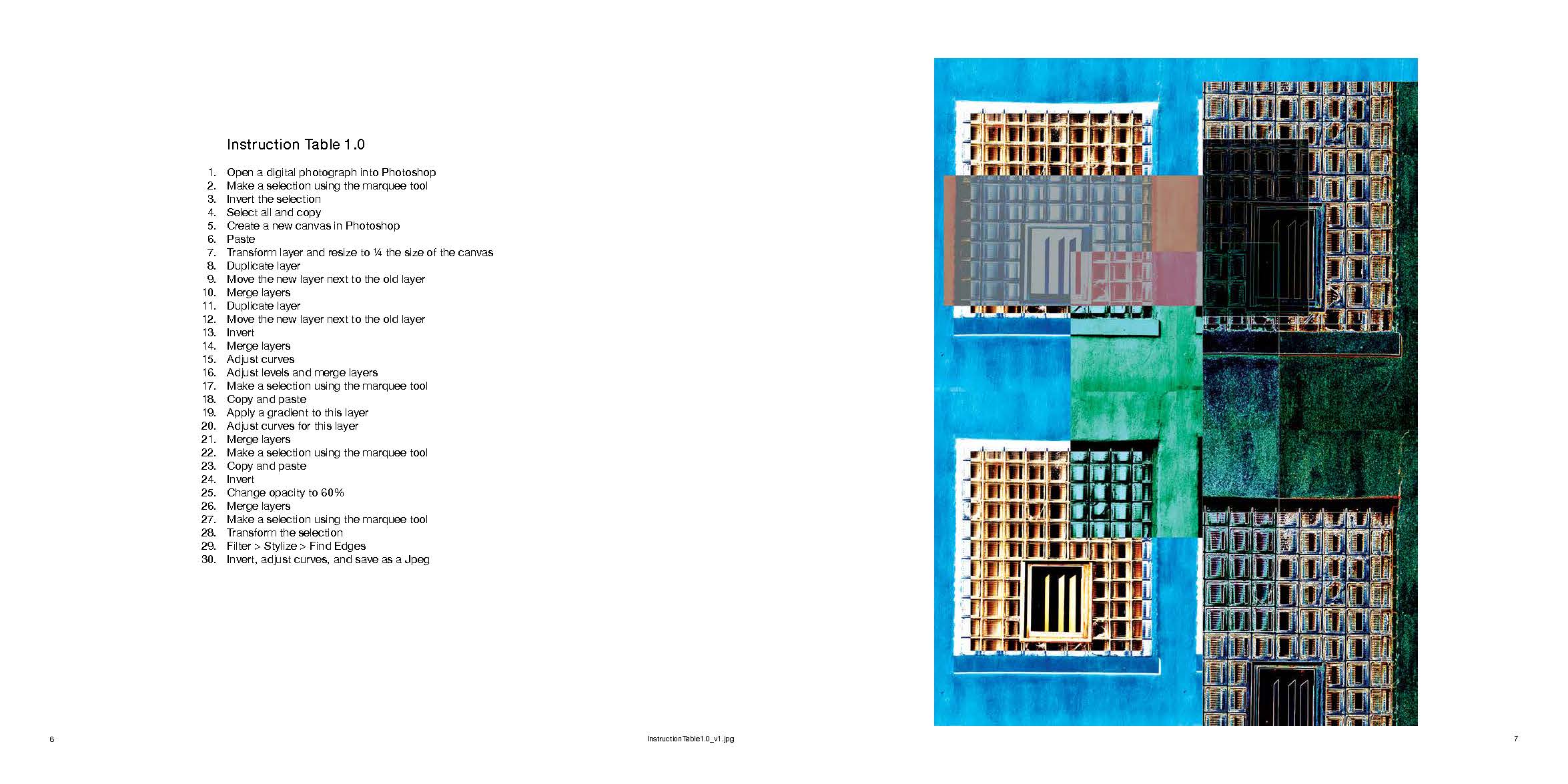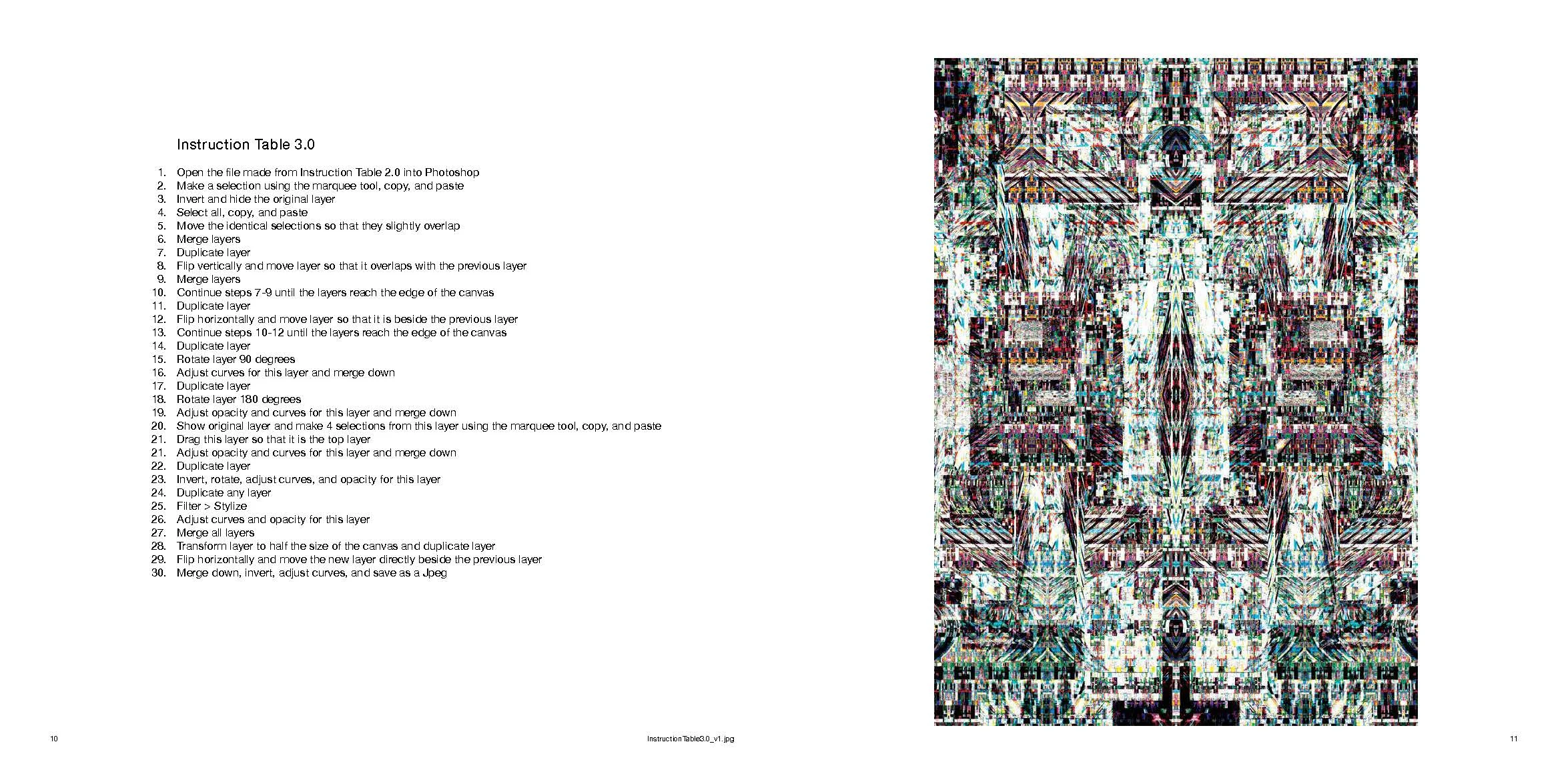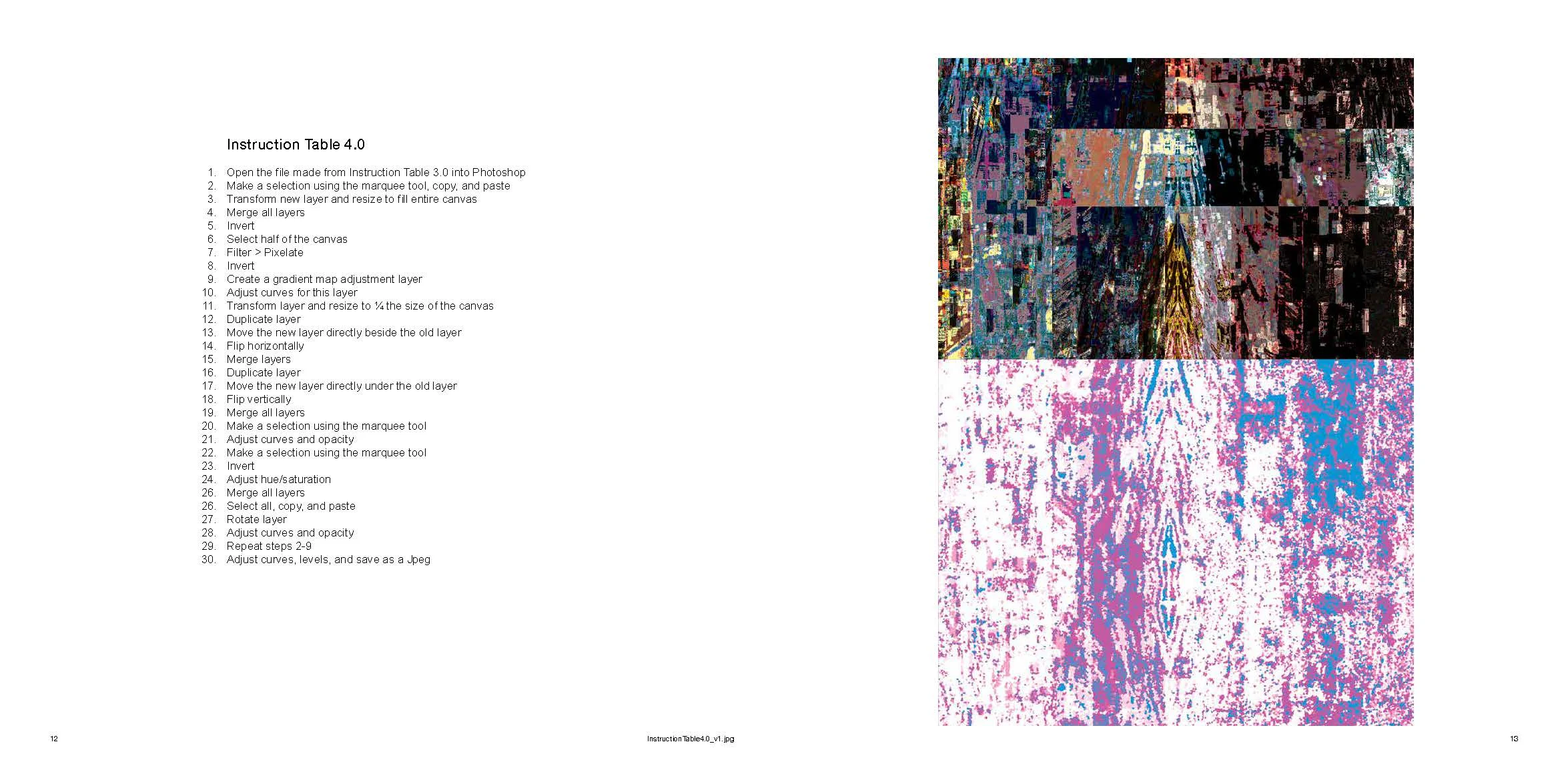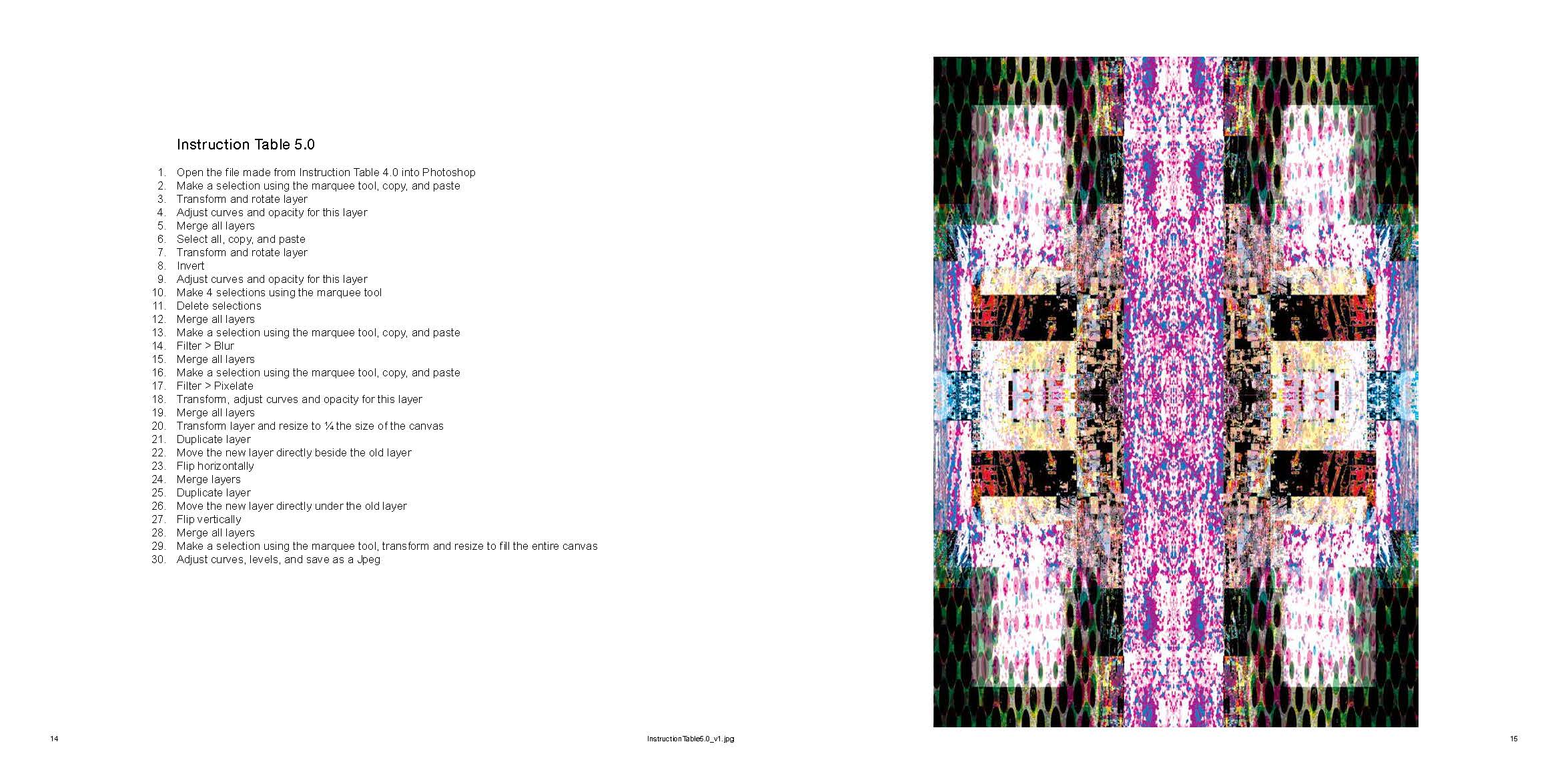Think Like a Human Act Like a Machine: Programming an Artist, 12”x12”, Book, 2017
In the digital works compiled in the book Think Like a Human Act Like a Machine: Programming an Artist, as well as Instruction Table 1.2, 2.2, and 3.2; I investigate a process whereby I am programming myself as though I am a computer. Before I began producing digital images for this series of works, I created “Instruction Tables” which attempt to replicate and simplify my digital practice into a set of programmable instructions. By doing so, I was able to relinquish the control of the creative process by eliminating the notion of spontaneity to a certain extent. Therefore, just like a computer, I began to create the works in Photoshop by executing the steps in the Instruction Table. I became a machine, programmed by a set of instructions and I would not allow myself to stray from the order of operations given. On the other hand, each of the various steps could be executed and interpreted in unique and unpredictable ways, creating variation each time the Instruction Table was completed. Therefore, during this collaboration with the computer I was able to “think like a human” by executing the operations in creative ways. The resulting approach is:
“a flexible, relaxed systemacy, which constantly adapts to change rather than exposing accidents as mishaps. When a system adapts to accident, that accident changes from the random to the variable.”[1]
Think Like a Human Act Like a Machine: Programming an Artist, 12”x12”, Book, 2017
The process involves both acting like a machine and thinking like a human. Acting like a machine means that I must follow the set of operations given and I do not allow myself to stray from these instructions. However, most of the instructions have a range of interpretation and can be performed with a wide range of results. Thinking like a human means being mindful and conscious of my ability to produce change during the execution of each of the instructions. I am controlled by the system, but at the same time I am able to work against it by creating randomness and variation.
[1] Spuybroek, Lars. The Sympathy of Things: Ruskin and The Ecology of Design. Bloomsbury Publishing, 2016, p 64.






